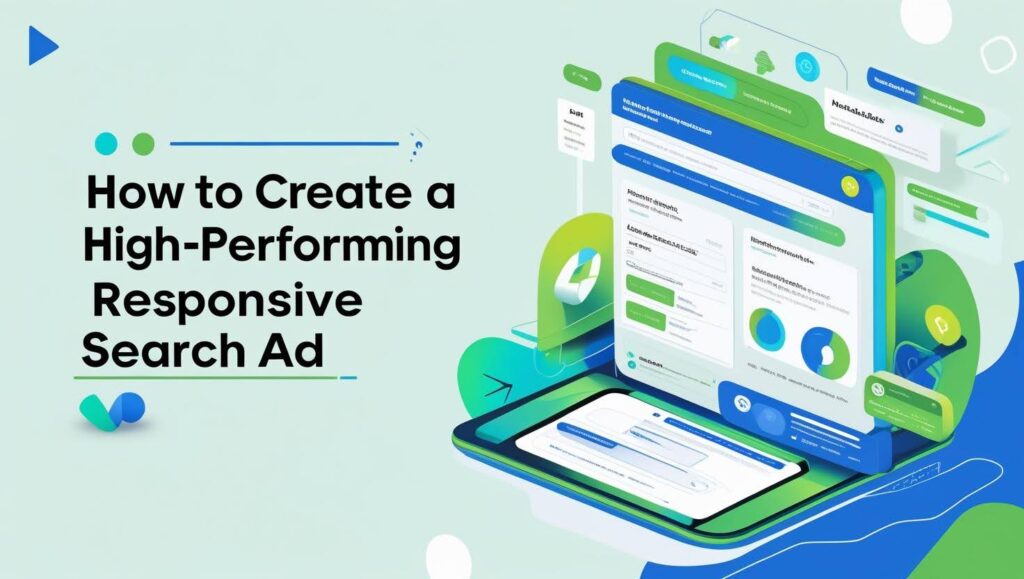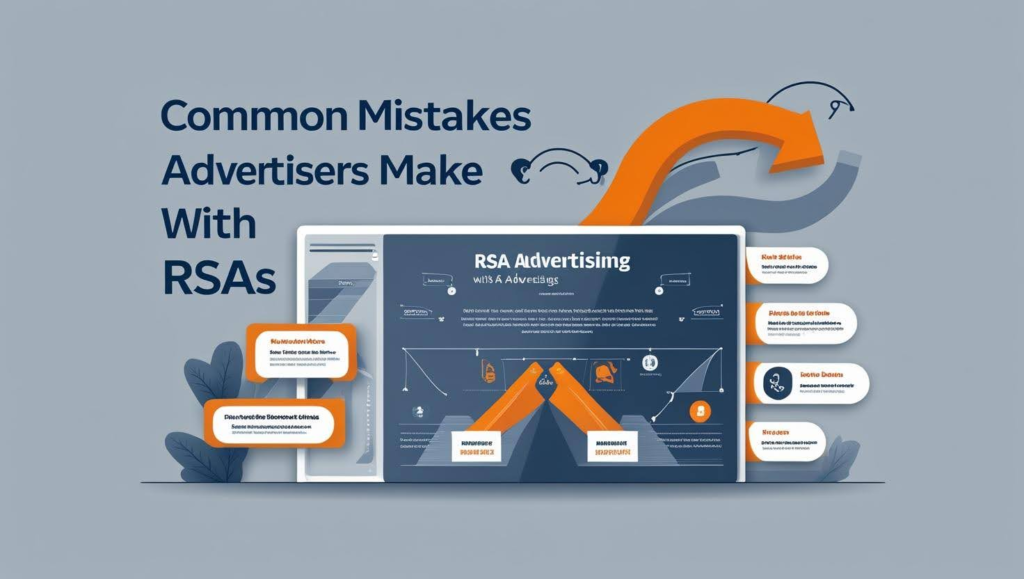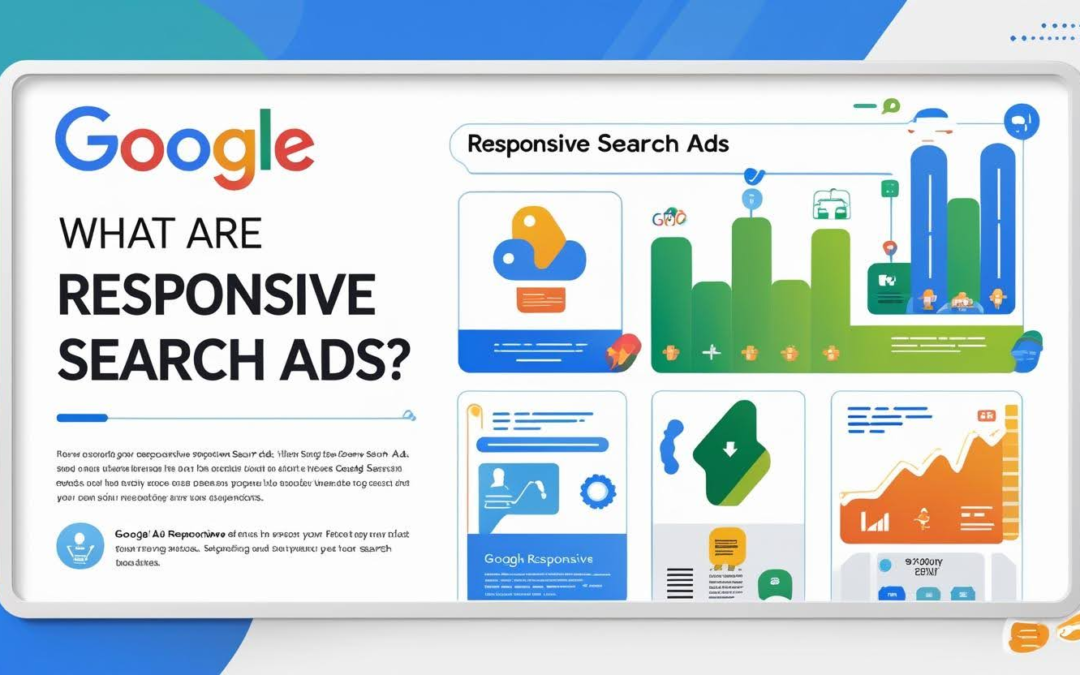Imagine you’re pitching an idea to a crowd, but you’re only allowed to say three things. Now imagine if you had 15 options and the ability to dynamically adjust your message depending on who’s listening. That’s the power of Google Responsive Search Ads (RSAs). They’re not just another ad format — they’re a revolution in how digital advertising adapts to audience behavior.
In the era of automation and AI-driven marketing, RSAs have become a vital tool in any digital marketer’s arsenal. Whether you’re just stepping into the world of Google Ads or you’re an expert advertiser optimizing campaigns at scale, understanding RSAs will give you an edge.
Let’s dive deep into what makes RSAs so powerful, how to use them strategically, and why they’re here to stay.
Key Takeaways
- Google Responsive Search Ads (RSAs) are powered by machine learning to create the most relevant ad combinations.
- RSAs offer greater flexibility and improved reach.
- Learning how to optimize headlines, descriptions, and performance metrics is key to success.
- RSAs will continue to play a central role in Google’s automation-first future.
- Avoid common mistakes like over-pinning or writing repetitive copy.
What Are Google Responsive Search Ads (RSAs)?
Responsive Search Ads are a dynamic ad format introduced by Google in 2018. Unlike traditional static ads where you write fixed headlines and descriptions, RSAs allow you to input up to 15 headlines and 4 descriptions. Google’s machine learning then tests different combinations to determine which perform best for various search queries.
This dynamic configuration helps ensure your ad shows the most relevant version to different users. For instance, someone searching for “affordable running shoes” may see a headline tailored to price, while another searching for “top-rated running shoes” may see a different one focused on quality or customer reviews.
So, why the shift? Because consumers no longer interact with static content. They demand relevance, personalization, and speed — and RSAs deliver all three.
RSAs also make digital ad creation more efficient. Instead of running dozens of A/B tests, Google automatically manages the creative testing process. This helps you save time while maximizing return on ad spend (ROAS).
The ultimate goal? Improve ad relevance, boost click-through rates (CTR), and deliver better performance across your campaigns.
How Responsive Search Ads Work
Here’s where the magic happens. When you create an RSA, you provide multiple headline and description variations. Google’s AI then tests these combinations across different user searches. Over time, it learns which combinations work best and automatically prioritizes them.
Let’s say you input 15 headlines and 4 descriptions. Google can mix and match them to generate over 43,000 different ad combinations. The system considers context — device, location, past behavior, time of day — and shows the most relevant combination to the user.
Behind the scenes, Google evaluates performance through a combination of machine learning and real-time user feedback. Ad combinations that perform well are served more often, while those with low engagement are automatically deprioritized.
This dynamic nature makes RSAs incredibly powerful. But it also means advertisers must be strategic with their inputs. Each headline and description should be unique, relevant, and engaging on its own — because it could be shown in any order or combination.
Key Features of Responsive Search Ads
RSAs bring several cutting-edge features to the table:
1. Machine Learning at Scale: Google automatically identifies which ad combinations drive the best results by learning from real-world search behavior and performance metrics.
2. Greater Reach: With a broader range of headlines and descriptions, RSAs qualify for more auctions. This means your ads appear in more search results across various user intents and devices.
3. Improved Ad Strength: Google provides real-time feedback on your inputs through the “Ad Strength” meter, helping you improve quality and diversity.
4. Dynamic Adaptation: RSAs can adjust their messaging based on a user’s search query, device type, time of day, or even geographic location. This makes your ads more relevant and likely to be clicked.
5. Enhanced Efficiency: Instead of creating multiple individual ads, one RSA handles the workload by delivering multiple combinations from a single setup.
All of these factors combine to give advertisers better performance — provided you know how to leverage the system effectively.
How to Create a High-Performing Responsive Search Ad

Creating a winning RSA involves more than dumping in 15 headlines. Here’s how to get it right:
Start with Keyword Research
Effective RSAs start with understanding what your audience is searching for. Use Google Keyword Planner or third-party tools to identify high-intent keywords and incorporate them naturally into your headlines and descriptions.
Write Distinct Headlines
Each headline should serve a unique purpose. Mix feature-focused headlines (“Free Shipping on All Orders”) with value-based statements (“Trusted by 10,000+ Customers”) and emotional triggers (“Your Skin Deserves Better”). Avoid repeating the same words or phrases across multiple headlines.
Use Descriptions Strategically
Descriptions should complement your headlines by adding context, elaborating on benefits, or providing a call-to-action. For example: “Order today and get it delivered within 48 hours” or “Book your free consultation now.”
Don’t Overuse Pinning
While pinning allows you to fix specific headlines in a certain position, overdoing it limits Google’s flexibility. Use pinning only for mandatory legal disclosures, brand safety, or specific compliance requirements.
Aim for ‘Excellent’ Ad Strength
Google will give you an Ad Strength score ranging from “Poor” to “Excellent.” To improve it, focus on writing varied and compelling copy, using your full allotment of headlines/descriptions, and including strong keywords.
Performance Metrics: How to Measure RSA Success
Measuring success with RSAs involves analyzing both traditional KPIs and RSA-specific metrics.
Impressions and Click-Through Rate (CTR)
These are still your go-to indicators for ad visibility and relevance. A high CTR means users find your ad appealing.
Conversion Rate
Ultimately, an ad’s purpose is to drive action. Whether it’s purchases, sign-ups, or downloads, measuring conversions helps determine true effectiveness.
Asset Performance Ratings
Google scores each headline and description based on how well it performs across different searches. Ratings include “Best,” “Good,” and “Low.” Continuously replace or tweak assets rated “Low” to optimize performance.
Segment Reporting
Break down RSA data by device, audience, time of day, and geography. This granular insight helps you tailor future campaigns based on what’s working.
Combination Reporting
You can view top-performing combinations of headlines and descriptions. This helps you understand which messages resonate best with users and replicate winning formulas.
Responsive Search Ads: Pros and Cons
Pros
- Greater Flexibility: Multiple combinations mean your ad can match a wide variety of user queries.
- Increased Reach: RSAs enter more auctions, expanding your presence across search results.
- Time-Saving: Automation reduces the need for constant A/B testing and manual optimization.
- Personalized Experience: Ads are more relevant and tailored to each user’s context.
- Real-Time Learning: Google’s algorithm learns and adapts over time for continuous performance improvement.
Cons
- Reduced Control: Advertisers cannot always predict or dictate which combinations will be shown.
- Complex Performance Analysis: Evaluating which elements are driving results can be more difficult.
- Creative Limitations: Poorly written or repetitive headlines can confuse users and dilute message clarity.
Despite the challenges, when used correctly, RSAs deliver results that make the learning curve worthwhile.
Common Mistakes Advertisers Make with RSAs

RSAs are powerful — but only when used correctly. Here are some mistakes that could sabotage your success:
- Too Much Repetition: Using similar headlines (e.g., “Shop Now,” “Buy Now,” “Order Today”) creates dull, redundant combinations.
- Over-Pinning: Restricting headline placement reduces Google’s ability to test and learn.
- Neglecting Updates: Keeping the same headlines for months without refreshing assets leads to ad fatigue and performance drops.
- Ignoring Asset Ratings: Low-performing assets drag down your overall performance. Regularly monitor and refine your creative inputs.
Avoiding these pitfalls helps unlock the full potential of RSAs.
Advanced Tips and Optimization Strategies
For marketers looking to push beyond the basics:
- Use Keyword Insertion Smartly: Let Google insert user search terms directly into your ad. Use this to match searcher intent but test for awkward or irrelevant combinations.
- Implement Ad Customizers: Create urgency by adding countdowns or location-based offers that adapt in real time.
- Tailor for Audiences: Use RSAs alongside audience targeting in Google Ads to deliver personalized messaging to specific customer segments.
- Regular Creative Testing: Refresh or replace underperforming assets monthly. The more you iterate, the better your performance.
- Combine with Smart Bidding: RSAs work best when paired with automated bidding strategies like Maximize Conversions or Target ROAS.
The Future of Responsive Search Ads
RSAs are central to Google’s evolving ad strategy. With the shift toward automation, machine learning, and first-party data, RSAs are positioned to play an even more integral role.
Expect deeper integration with audience insights, real-time personalization, and Performance Max campaigns. As more advertisers embrace RSAs, the competition will no longer be who writes better copy — it will be who leverages data, targeting, and automation most effectively.
The future is adaptive, intelligent, and user-centric. RSAs are the vehicle taking us there.
Conclusion
Google Responsive Search Ads are reshaping the landscape of search advertising. They offer an unprecedented level of adaptability, scale, and performance — all driven by artificial intelligence.
But like any tool, success with RSAs depends on how you use them. Understanding how they work, optimizing your inputs, and continually refining your strategy are key to achieving results.
For marketers willing to embrace automation and innovate creatively, RSAs offer the chance to stand out in an increasingly competitive space.
So here’s the real question: Are you optimizing for the future — or clinging to the past?

